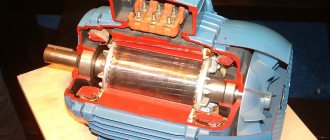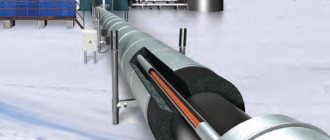Faulhaber with hollow rotor
Case diameter – 3…44 mm, power – 0.0063…212 W, rated torque – 0.023…202 mNm, idle speed – 5,300…46,500 rpm
Links to detailed description of brushless DC micromotors:
- smoovy® series micromotors
- Brushless servo motors with Hall sensors
- Brushless motors with sensorless commutation
- Four-pole servomotors
- Flat brushless motors (disc rotor micromotors)
- Flat-type geared motors based on contactless electric motors
- Motors with integrated speed controller and switching electronics
- Motors with integrated motion controller
Links to related small drive components:
- Mini gearboxes
- Ball Screws
- Sensors and braking devices
- Controllers for speed control
- Controllers for position control
You can find a description of all Faulhaber products at this link.
Biodiesel
Biodiesel in flasks
Complex motor fuel, obtained through the transesterification reaction from triglycerides, is a mixture of monoalkyl esters of fatty acids. In essence, biodiesel is an alternative and completely environmentally friendly type of fuel. It is made from completely biological raw materials, which means it can use waste from any agriculture. At the same time, reducing human need for oil.
Plus:
Biodiesel is completely biodegradable, which means that in the event of an accident with a fuel spill, the consequences will be less catastrophic than in the case of oil or diesel. Biodiesel also increases the life of the engine, being a lubricant for parts, as well as a solvent for contaminants.
Minus:
Biodiesel is not completely safe for the environment - instead of the usual carbon dioxide and sulfur compounds, when biodiesel is burned, nitrogen oxides enter the air, affecting the ozone layer. But scientists are now actively working on this problem, selecting suitable filters to neutralize this effect.
In addition, the price of biodiesel is much higher than the price of regular diesel fuel.
Brushless (BLDC) DC motors Eibl DHT
Housing diameter / Flange side size - 63...225 mm, rated winding voltage - 12...96 V, power - 0.06...94 kW, rated torque in continuous operation - 0.56...301 Nm, rated rotation speed - up to 3,000 rpm, can be manufactured with Hall effect sensors, resolver, absolute or relative encoder
Links to detailed description of brushless DC motors:
- Brushless motors
You can view the description of all Eibl DHT products at this link.
How to chop firewood - mechanical splitters, their designs
Many people would like to make the work of collecting firewood easier. Manually chopping ten cubic meters or more is a serious task even for a physically fit person.
- The main expenditure of effort goes into splitting. This is the main procurement process, and it is submitted to mechanization. Auxiliary operations - carrying logs and stacking firewood - are more difficult to mechanize.
How to make a mechanical cleaver, what experience in this matter...
Regular cleaver for chopping wood
Even choosing a good firewood cleaver will help make the process easier. It is a blade weighing 2–4 kg, cone-shaped at an angle of 30–40 degrees, mounted on a relatively long handle. The purpose of this design is to split even a large piece of wood with one blow. This tool is completely different from a regular ax and is superior when it comes to splitting logs.
- Finding a decent cleaver is not difficult. Without experience, it is better to focus on the average weight and long length of the wooden handle, since it can be shortened if necessary.
Next, we will consider possible options for mechanizing the process of splitting firewood.
Mechanical pendulum cleaver
A pendulum cleaver for firewood makes the work somewhat easier. Its principle is simple - a heavy load swings up and down on a spring-loaded beam. A cleaver blade is attached to the load. If you substitute a block of wood, the blade will split it very easily.
The woodcutter swings the cleaver manually and places logs under it, while trying not to put his fingers under it... But the costs of physical labor remain significant.
The diagram of a mechanical cleaver for firewood is shown in the figure.
An example for making a mechanical cleaver yourself.
- A wide frame made of any tubular elements - the structure should not tip over, because the lateral moments of forces when swinging are significant. If it tips over, then you just need to install wider supports.
- It is based on a spring from the suspension of any passenger car; as a rule, “Moskvich” and “Zhiguli” springs are used, with a compression force of about 200 - 250 kg.
- A swinging beam 2 meters long, with a load of 25 kg (the weight of the cleaver and the beam itself is added here).
- The hinge on which the swinging beam is attached - possible without bearings, like an “axis in a pipe”
- The bowls for wrapping the spring are welded onto the frame and a swinging beam made from a pipe of a suitable diameter.
- The distance from the hinge to the spring axis is a key parameter, as is the weight of the load. They determine the oscillation period and impact force. In this case, 30 cm is recommended, but can be selected experimentally based on operating experience.
Electric wood splitter for preparing firewood
A simple device consisting of a motor with a cone attachment on a shaft will help in preparing firewood. A rotating cone, equipped with a large thread pitch along the surface, is screwed into the block and splits it. The operator just has to feed the lumps onto the frame with the engine, press them against the device and throw off the broken ones.
- The device is based on a low-speed engine with a power of 1.5 - 2.0 kW. Number of revolutions up to 400 per minute. If you have a high-speed one, then you will have to install it under the table, make a pulley transmission with a V-belt, with a corresponding reduction in speed, or use a gearbox.
- A cone nozzle with a diameter of 60 mm with a length of the cone-shaped part of 200 mm and an angle of 16 degrees is turned on a lathe, after which a thread is cut on it.
This device is not very productive, but it can significantly facilitate physical labor and is well suited for older people.
- A device with a belt drive and pulleys requires mandatory guarding of the rotating parts. It is not allowed to work with any rotating device wearing gloves or clothing that would be in the rotation zone. Clothes getting caught by rotating parts can have extremely serious consequences.
Hydraulic devices for splitting firewood
The hydraulic cleaver is a hydraulic jack that develops a force of 3 tons. Using a jack, the block is pressed against the knives, which divide it into 4 parts. The jack is used for body lifts, buckets, excavators...
The jack requires a distributor valve that switches the fluid supply “stop-forward-backward”, an oil pump usually from the car, high-pressure hoses, a 2.0 kW electric motor, an oil tank (any).
An experienced mechanic or motorist can easily assemble a hydraulic cleaver for chopping wood. For example, ready-made hydraulic equipment from an agricultural tractor is used. But the pump drive here will most likely be from an electric motor. Such cleavers are made by factories and workshops.
A hydraulic cleaver is the most productive device that facilitates the work of preparing firewood. Allows you to harvest firewood on an industrial basis and open services for preparing ready-made firewood for the winter season.
- Operation is relatively safe, but any work with mechanical moving parts requires special concentration. It is not permissible to work while tired or under the influence of substances that...
Low power engines have the following advantages:
- high technical characteristics, energy performance;
- long period of operation, trouble-free operation;
- protection of the mechanism from external factors.
The main areas of application of small-sized DC motors are:
- various radio communication devices;
- electric drives for various purposes;
- automatic control systems;
- production machines, lines;
- household and specialized appliances.
They are indispensable in areas where it is impossible to use large engines. For example, small electric motors are often used in microelectronics, medicine, optics, and science in general. In addition, they are actively used at energy facilities, automation systems and production lines. Small-sized motors can be connected not only to the drive, but also to the battery and the electrical network.
How to get rid of this effect?
Many manufacturers have puzzled over this problem. And the problem was nevertheless solved by installing an additional turbine, often mechanical, rarely electronic. Such engines are called TWIN TURBO or double supercharging.
The principle is simple - the first mechanical or electronic turbine operates at low speeds, it provides pressure to accelerate the car from idle. Next, the “regular” one is connected, which runs on exhaust gases. Thus, it is possible to avoid the “turbo lag” effect.
There are also other techniques. So, for example, options with variable nozzle geometry, or pressure units such as Smart Diesel (used in diesel versions), they are all designed for only one thing - to remove the dip at the bottom and make traction smooth at any speed.
If you are thinking about the question of how to remove a turbo lag, contact a tuning studio; they will be able to select various solutions for you, including installing an additional unit.
A short video of a guy conducting an experiment with his car.
That's all, I think my article was useful to you. Read our AUTOBLOG.
(
11 votes, average: 4.73 out of 5)
Types of purges.
The blowing method is called cross-slot (Fig. 91, a). Its peculiarity is that the exhaust 3 and purge 4 windows are located on different sides of the cylinder liner. They are connected, respectively, to the exhaust manifold 2 and to the purge air receiver 5. The purge windows are inclined upward, due to which the air first moves to the cylinder cover, then, displacing the exhaust gases, changes direction to the opposite direction.
So that by the time the purge windows open, the pressure in the cylinder has time to decrease and become lower than the purge air pressure, the outlet windows 3 are provided above the purge windows 4. However, in this case, the piston 1, moving upward, will first close the purge windows, the outlet windows will still be partially open. The purge process after closing the purge windows end, therefore, a fresh charge of air will escape through the incompletely closed exhaust windows (partial leakage). To avoid this phenomenon, in large engines the exhaust and purge windows are of the same height, but non-return valves are installed in the purge air receiver, which prevent exhaust gases from being thrown from the cylinder into the receiver when the windows are opened; purging will begin only when the pressure in the cylinder drops after opening the exhaust windows. When the piston moves upward, purge air will flow until both windows close. For the same purpose, in some large engines, a drive spool is installed on the exhaust pipe, the drive of which is adjusted so that at the moment the piston closes the purge ports, the spool closes the exhaust ports.
Start-up process
In start-up mode, when the rotor is stationary, the magnetic field of the inductor rotates around the rotor assembly at the same speed. At this time, during one revolution, the polarity of the field changes, and the torque changes to the opposite. The repeatability of these changes depends on the frequency of rotation of the magnetic flux, the number of poles and is equal to the frequency of the current in the stator winding:
f = no*p / 60 = fnetwork.
The anchor mechanism, having a significant mass and moment of inertia, with a large repeatability of changes in the torque parameter, does not have time to accelerate and remains in a stationary state. Therefore, the average value of the starting torque developed by the electric motor is zero.
To start a low-power LED, an additional short-circuited winding is placed on the rotor poles. In the starting mode, it operates as asynchronously and under the influence of the asynchronous starting torque the rotor accelerates. When the rotation speed approaches synchronous speed, the field winding is turned on, the engine is “pulled into synchronism” and rotates at the same speed.
During the motor mode, the starting winding does not affect the operation of the electric motor. To launch powerful PMSMs, external electric drives are used.
Long-stroke and short-stroke motors - what is the difference and which is better?
Admit that you have often seen phrases in test drives about “the typically short-stroke nature of the engine” and did not quite understand what they were talking about. Today we will finally tell you what short- and long-stroke engines are, what is the difference in approaches to engine design, and why we can now confidently say that the “long-stroke” ones have won.










